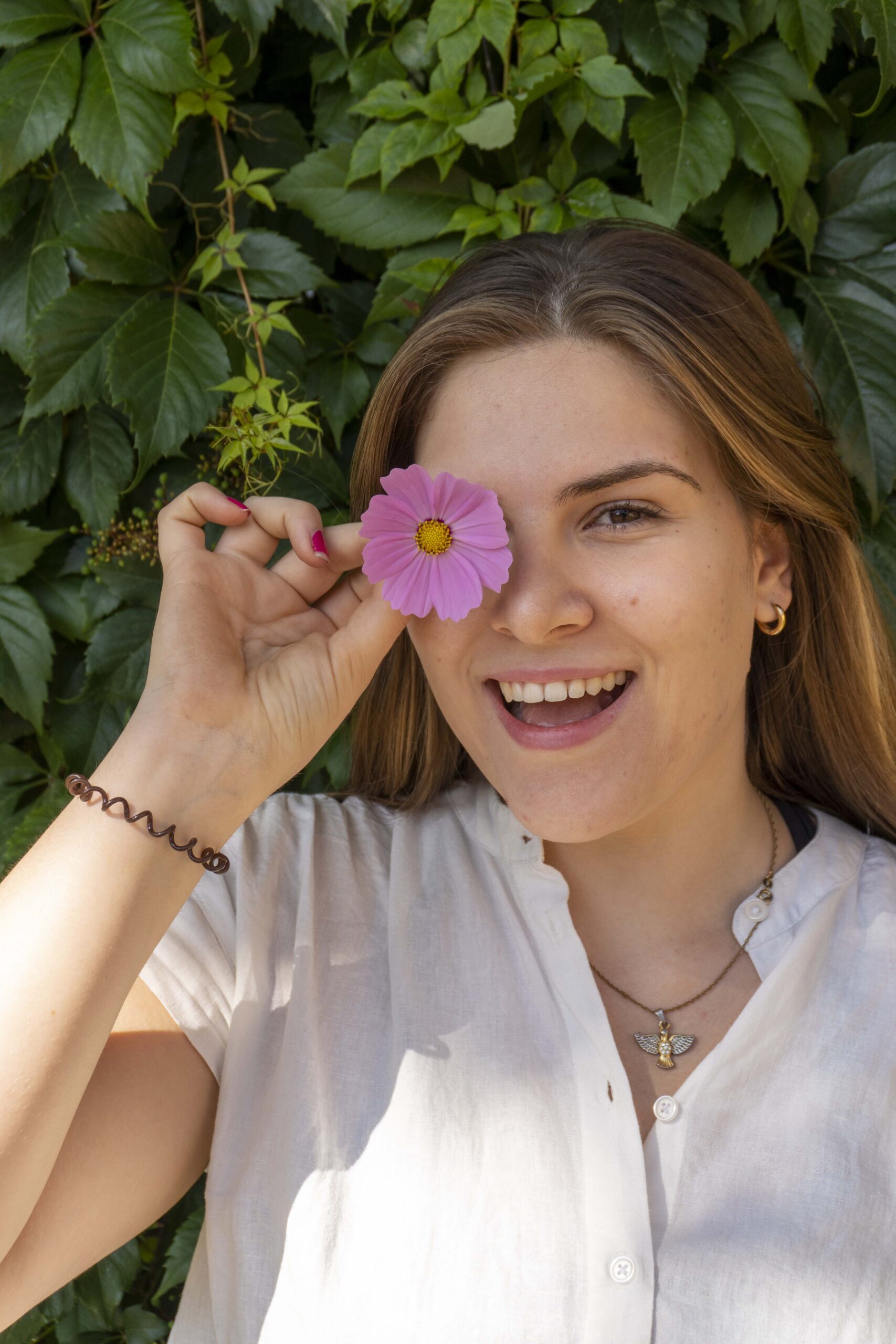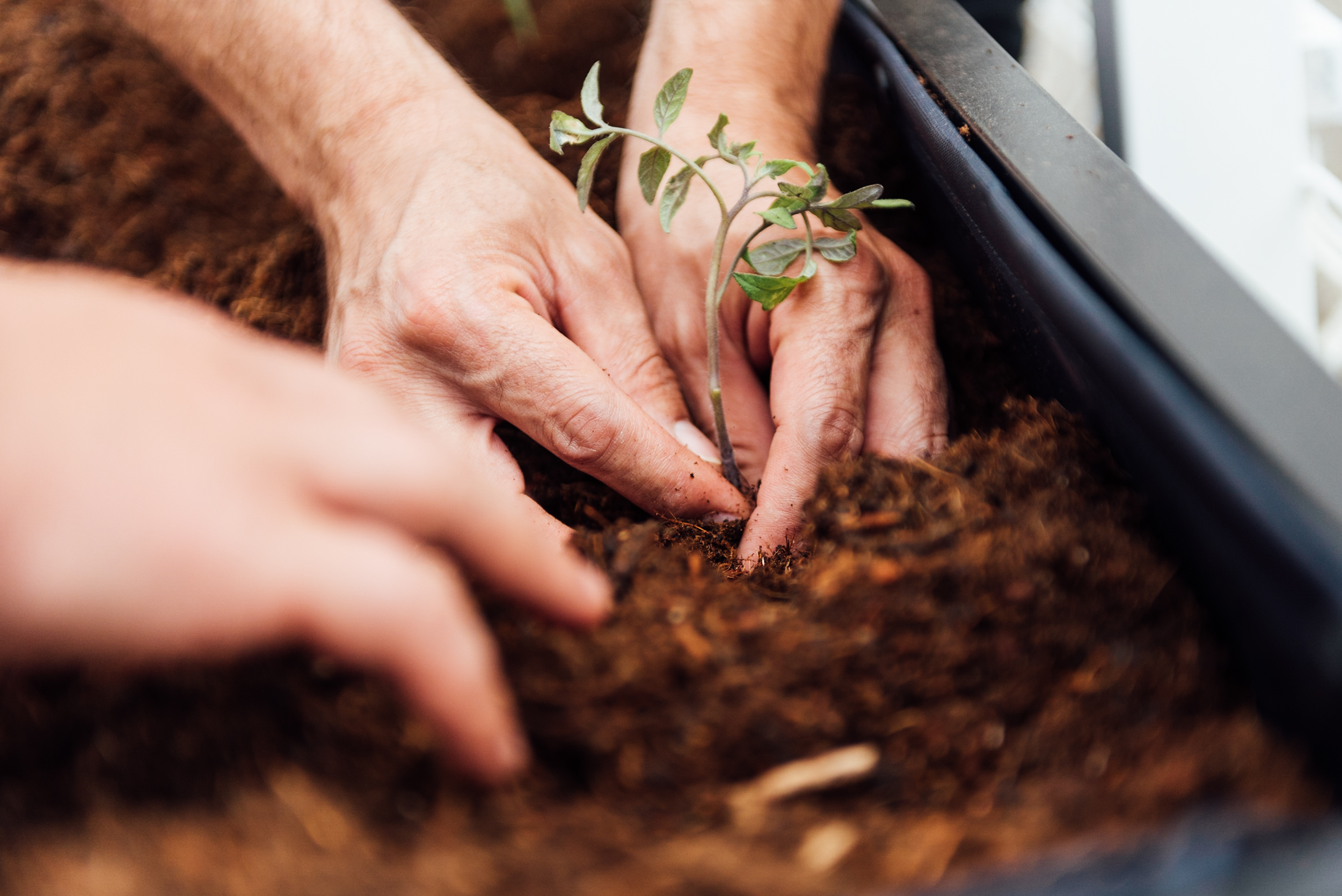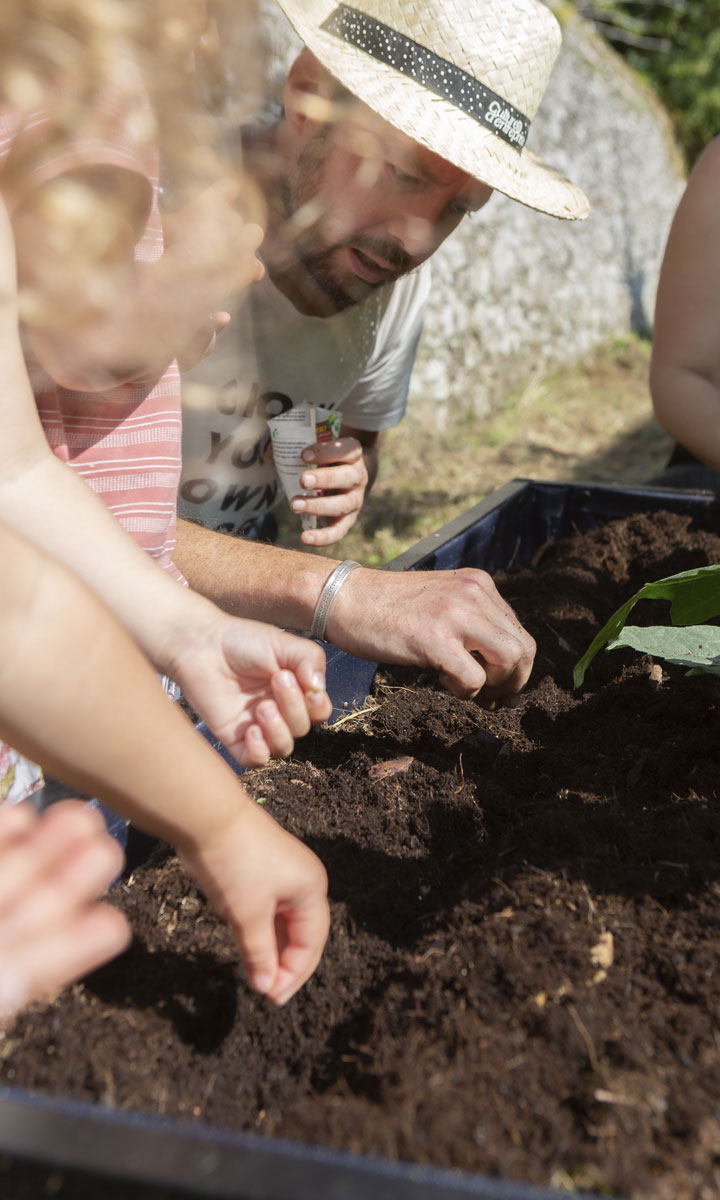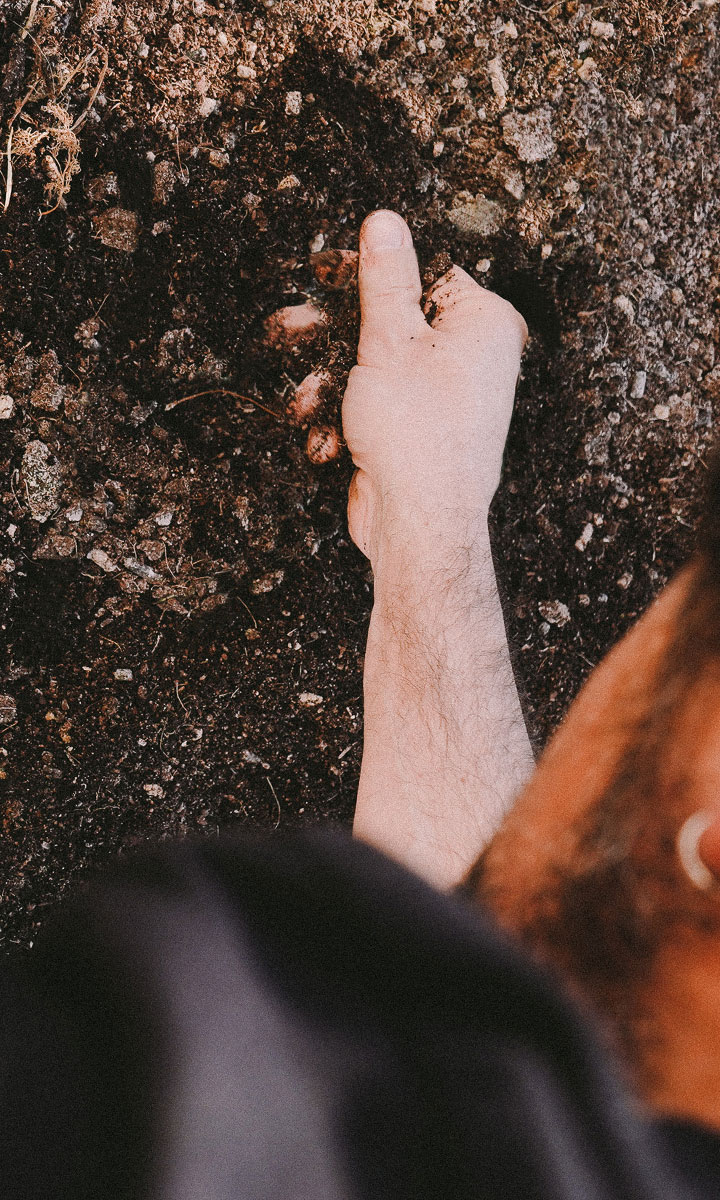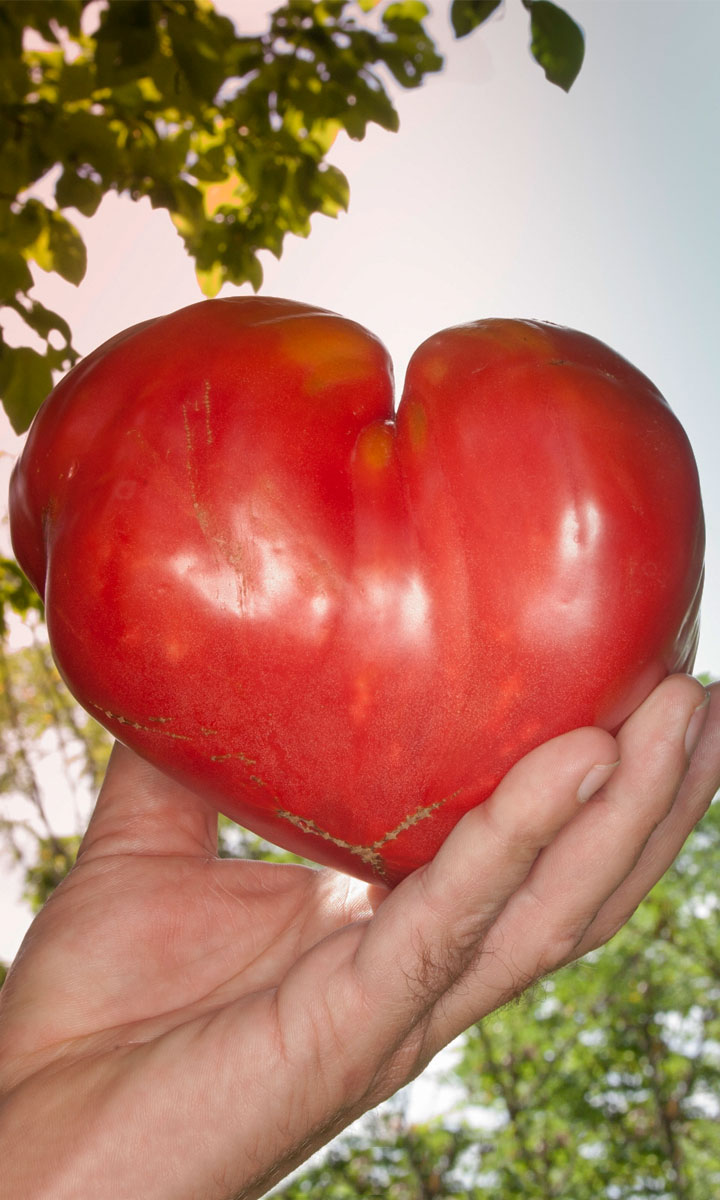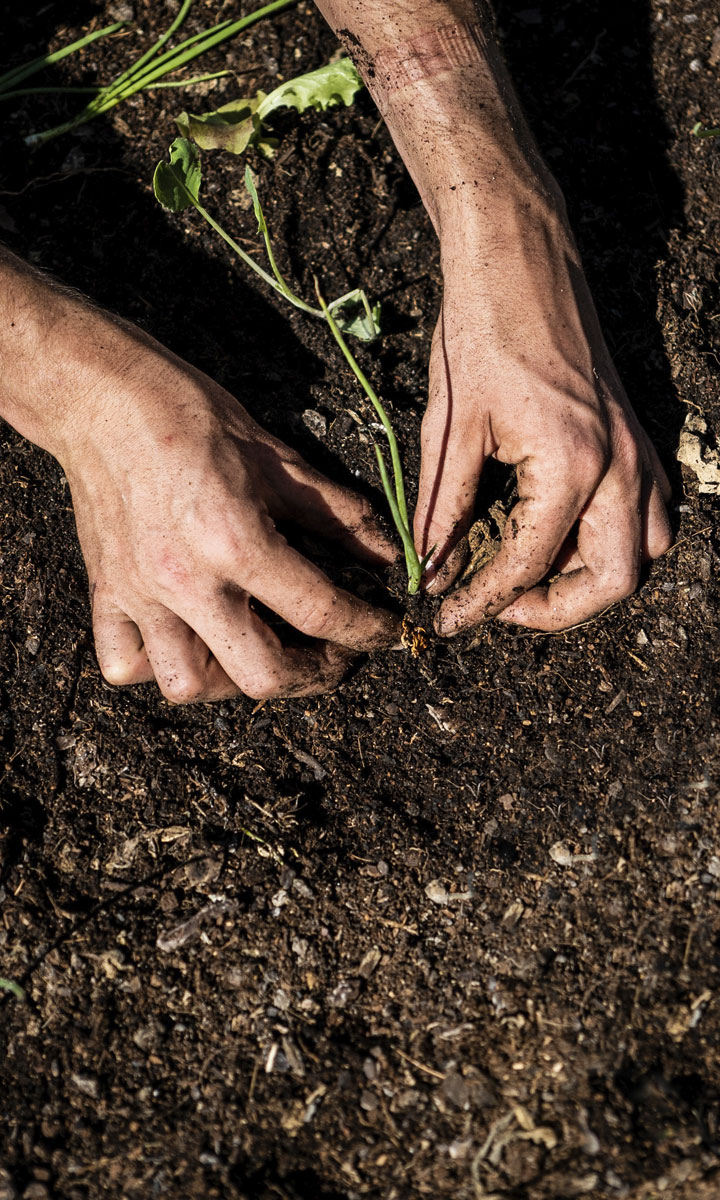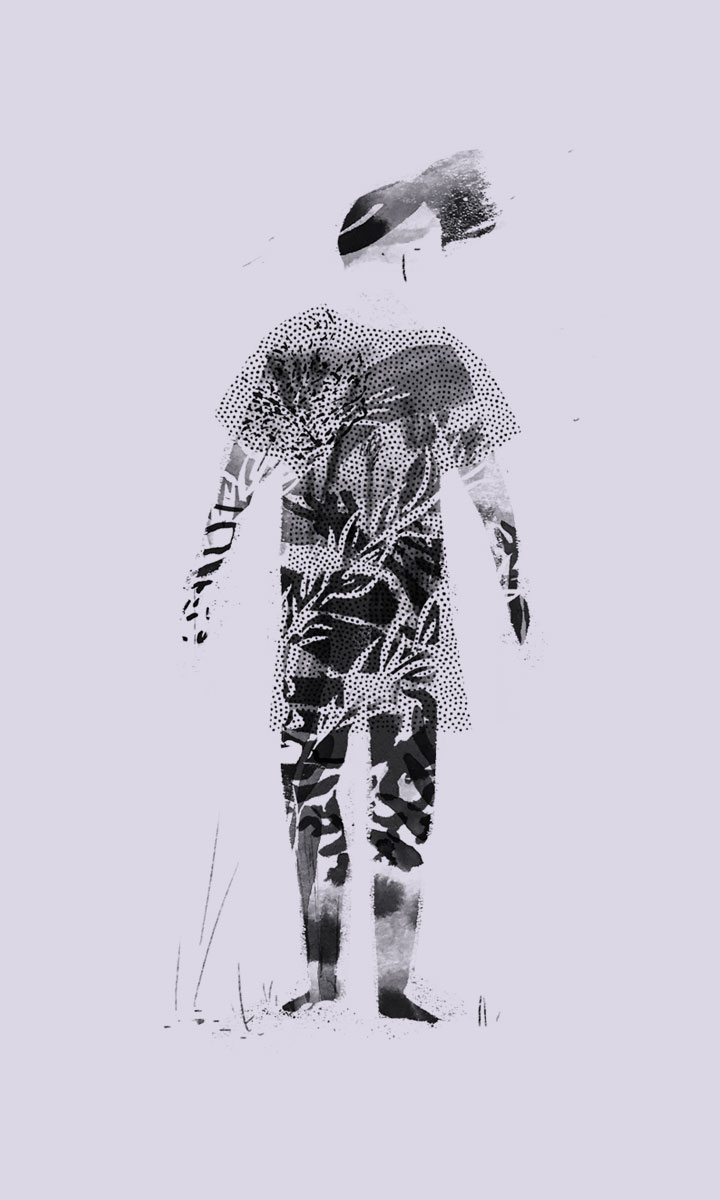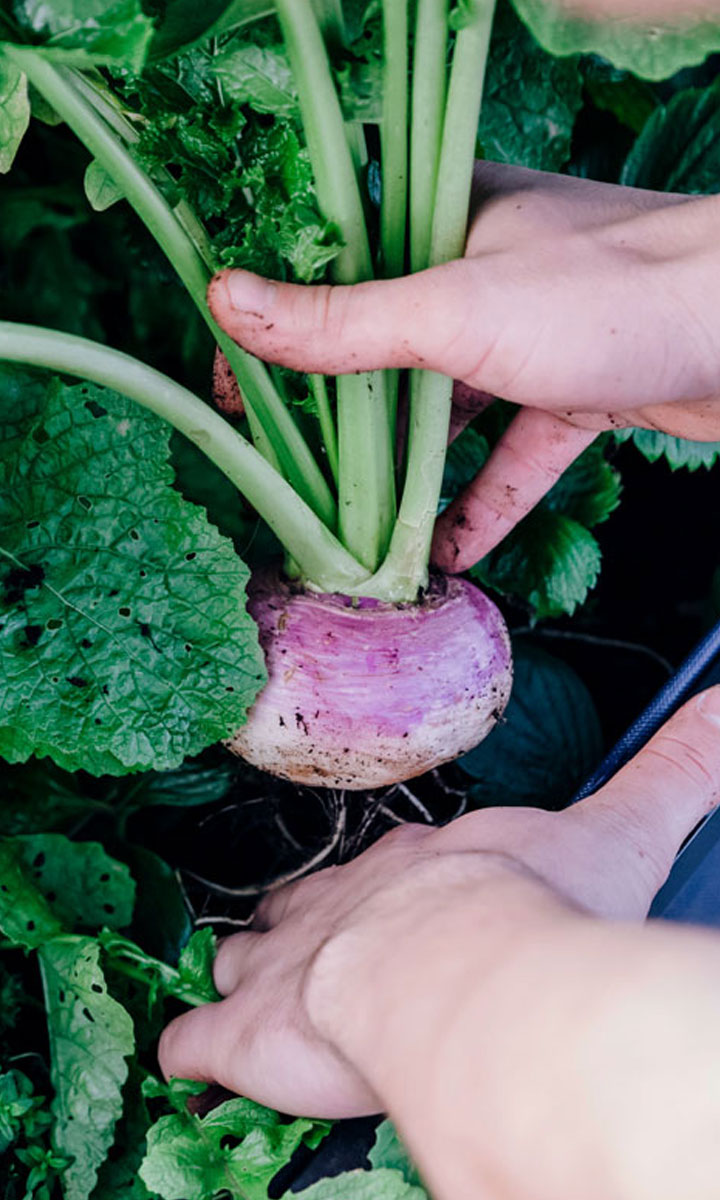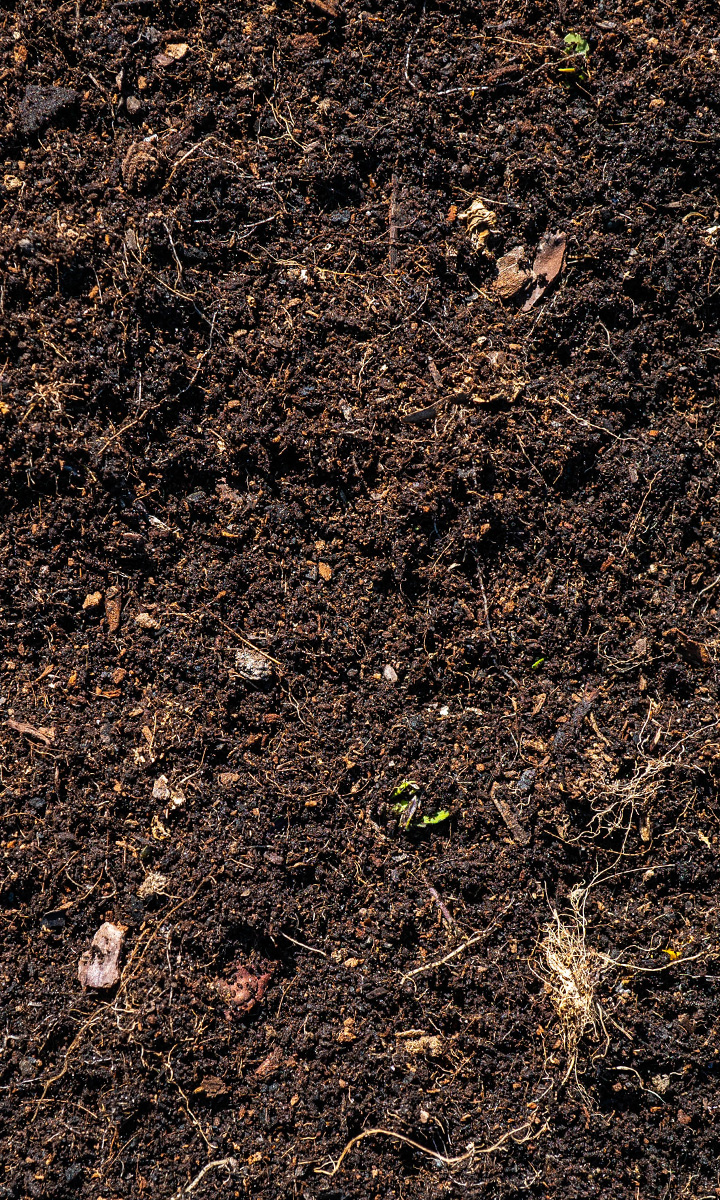Menu
Community garden: a place to grow belonging and feelings.
Henrique Dias
Webmaster
Eva Beth and Torsten Oelscher are two German photographers who met in Munich and lived in Paris for nearly 20 years, before moving to Berlin and founding their company “black flamingo”.
Their work as “interpreters” between artists, galleries and brands,and the outstanding location of their office at Fahrbereitschaftin a decommissioned gas station that used to serve the Stasi vehicles, would bring us to a whole other conversation. But, today, we want to stick to the community garden in a Parisian neighborhood that changed their lives!
This interview was edited for length and clarity and reviewed by Eva (E) and Torsten (T).
The beginning of an adventure in Paris.
What brought a German couple of photographers to Paris?
T: We used to work as photographers, we metin Munich and moved together to Hamburg. From there, we were considering going either to London, New York or Paris. Eva’s parents used to have a wine farm in southwest Germany, where the Moselle river flows, and we knew that we were needed there at least 3 times a year to help. Being closer to the village than Munich or Hamburg, Paris was the perfect match!
In which neighborhood were you living?What made you choose it?
T: Always on the “rive droite,” 18th, 9th, 11th,19th — we moved a lot. In 2005 we got kicked out of our loft in the 11th, because theowner went bankrupt and needed to sell it.
E: By that time it was very difficult to find places in Paris.
T: To increase our chances, we widened our search range and ended up finding one withonly other 5 “candidates”. The owners, who used to work in the filming industry, chose us.
Did you know this area? What was it like?
E: I knew that area from before. I got lost once there and found it so beautiful.
T: I mean, la Butte Bergeyre is a small hill and has just one road going up and the same road going down, so there is no through traffic at all. It is near the Parc des Buttes-Chaumont and the office of the French Communist Party, constructed by Oscar Niemeyer. It’s a world apart, “un monde à part”! It’s 100% like a village in the middle of the 19th arrondissment.
E: No, it’s actually better than a village! I grew up in a village and sometimes people cross borders in such small places. There, nobody, ever crossed the limits!
T: The urbanisation began in the 20’s, when the Rothschild family sold the land to labor people, together with a loan, so that they would be able to construct their own houses. Before, there was an amusement park in this area, les Folles Buttes, with a view all over Paris.
E: There was also the Villa Zilveli, construc-ted in the 30´s by a Corbusier student, then a very small house across the street and another big one on the other side — it was a complete mix. There were people from theart world living there, actors, dancers, visual artists, but also teachers, secretaries, etc.
T: It was not always an area in which people wanted to live, but it became famous over the years.
A community garden where we cultivate many experiences
Were there any green areas? There was already a community garden when you arrived, right?
T: There are 2 or 3 vineyards in Paris, one I know is in Montmartre, and the other one was right beside the Zilveli house. It was impossible to build in that area, so on the left side there was the vineyard and further down was an abandoned lot.
At one point, the Mairie de Paris launched a program for a Jardin Partagé (Community garden). By that time, there was already an association in the neighborhood, L’association Butte Bergeyre, and they applied for a project and got funding for le Jardin Partagé. So when we arrived, the garden had already existed for one year.
E: The association also had a place called l’utopicerie, an old grocery store that was turned into their headquarters, which they used to promote events.
How did you get involved with the garden in the first place?
T: Originally, we didn’t have any intention of getting involved with a garden. We already had a lot to do on the wine farm. But once the wine farm was finished, and since our apartment didn’t have a balcony, we thought it could be nice to have keys to the garden and have a nice place to hang out with our neighbors in the evening.
What was your relationship with the winefarm? You had a farming background?
T: I grew up in the city, Eva grew up on the farm.
E: A real farm! With cows, pigs, a winery, and we’ve always had a garden. One part of the garden was always wild, because as my grandma used to say, the birds need to live too.
We already had, at the time, quite an ecological approach.
T: Ever since I met Eva, I’ve been working on the wine farm as well. Working the tractor up in the wine hills, plowing the vineyards, wine harvesting and making our own liquor. But I grew up in the city, and my parents had a garden, but that was of no interest to me.
E: That garden was only grass! I remember, I’d never seen a garden like that, with so few flowers!
T: My parents didn’t have “la main verte.”
Do you did have “la main verte” (a green thumb), before Paris?
T: I never did — I’m still working on it! It’s getting greener and greener, it just needs practice and you simply need to keep trying. Sometimes what you’ve planned works out, sometimes it doesn’t. Then you discuss with other neighbors and they tell you “yeah, you should cut off the side branches of that plant” or something. It’s all about those with more of a “main verte” helping those with less.
E: I had a connection with nature when I was young, because of the farm. Then I lost it, and now I’ve found it again!
How was the community garden organised? What were the rules?
T: There were 20 to 30 participants with a 2m2 parcel of land each. It wasn’t very big. There was also a common area, some beehives, and a completely abandoned area in the back. The great thing was that everyone had their own garden, but we also shared one part, which we all helped to grow. We would normally pay a yearly fee, for the association, but other than that it was free.
E: The association also made some money selling honey or organizing flea markets.
T: The association kept the garden gate open every Saturday or Sunday afternoon, so that pedestrians could visit it. Other than that, we could have our fun. We used to have dinner there, and whenever there was nice weather everyone would come, bring their food and share.
E: I think that during the summer, we would eat in the garden every night! There was always someone there having dinner.
T: Once a year there was also a repas de quartier, where one street was closed, and each neighbor brought their own table and food to have lunch together with everyone. That was an amazing event!
Was there a leader? Sometimes with this kind of project, you need someone to show you how to participate.
T: Yes, I know exactly what you mean. I had the same impression in lots of other social projects in which I was engaged. But not there! It depends on the people running the project. Good leadership gives a soul to the community. Without Gégé (the previous president of the association) or Marco (the current one), who are fabulous people, things would be different. You need someone in charge, but also a community of people willing to give more than they take.
The community garden confirms that we belong here!
Did the garden help you make friends?
T: Our intention in joining the garden was to have access to this outdoor space near the apartment, and maybe to get to know some neighbours, but that was not the focus. It turned out to be a super nice social spot to spend time! Once we started going, we started making friends with the neighbors.
E: In the beginning I was too shy to speak to people, and we were just going there to get things done. In other forms of communication, there’s very little time, and you need to start speaking right away. But in the garden, you’re doing something, so you have time. People can start doing something with you. They show you something, interact, ask what you think about this or that in the garden. It’s another way to understand people, a completely different one.
T: You have a non-commercial, non-business subject to talk about with people. If that works, then the community follows. You have your garden, and so you have one theme that connects everyone.
Would you say that the garden helped you feel like you belong there?
E: Yes! It’s an absolutely amazing feeling, because in that moment (and it’s a really important moment), you understand that you’re part of a community. You are welcomed, you are part of something. Even on a such a small parcel of land, no matter how big it is, you are part of something, and you want to be a part of it!
T: It’s the moment when you feel most at home! There, in the garden — that was the moment when we discovered that this neighbourhood had become our home.
E: I’ve never felt as comfortable as I felt there, not even in my hometown.
T: Definitely, it was the best time of our lives. The best community and the best neighbourhood ever!
And what did you learn from gardening?
T: Something fun is that from the moment you plant something — or sow seeds, tomato seeds for example, and you pre-grow them to then plant them — until the moment you harvest the fruits, that’s about a year or at least 9 months. So, when you start gardening you need to think about staying there, where you´re growing it, for a longer period. Because if you leave town for two months, that’s just something you don’t want to run away from.
E: And you also accept that not everything is working, and that definitely helps you.
T: You learn to accept failure, because some of the plants simply do not grow. You plant the seeds, and nothing comes out.
E: We had this natural, wild section of the garden, and Gégé said “if the bees are ha-ppy, you’re going to be happy too!” And I was not so happy in my first year back in Germany, but I thought “well, if I have wild grass here and the bees are happy, I’ll be happy too!”. If you’ve belonged to a community and you’ve been so profoundly happy in your life, you will always be grateful.
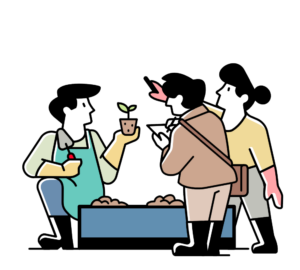
Ground yourself
A transition program centered around
a corporate garden, to connect with
yourself, others and nature.
a corporate garden, to connect with
yourself, others and nature.
